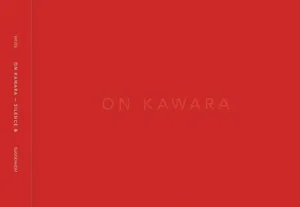On Kawara Silence edited by Jeffrey Weiss 2015
‘On Kawara Silence’ is the catalog that accompanied the spectacular retrospective of this Japanese-American conceptual artist’s work at The Guggenheim Museum in NYC from February 3-May 15, 2015, just a few months after the artist’s death at 81, or as he would have expressed it on his 29,771st day of life.
As I’ve written in other reviews of Kawara’s work, attending that exhibit was life-changing for me both in terms of a daily practice of sending a postcard to a friend, but also in ways of thinking about the paradox between the precious time we are given each day and the nearly omnipresent mundane events that make one day indistinguishable from another nearly all of the time.
This catalog, as most large books about a major art exhibit, provides visual renderings of all the works in the show—the date paintings, postcards, telegrams, journals of where he went and who he met, the one hundred year calendars and the 10 volume sets listing the one million years in the past and the future. The catalog also presents several superb essays about Kawara and his work. The French conceptual artist, Daniel Buren describes Kawara’s work as “the most quotidian quotidian possible…. Kawara’s work proves to be a quest for the present, which he attempts to share with others by reinforcing more than ever what seems to me the astouding, illuminating paradox he has repeated his whole life. It is, in fact, about time passed and irretrievably escaped, about the event that happened, the book that was read, the people met,the landscapes surveyed, the hour of waking…and that indeed, “once” there was ” a time” when all this took place; and that this time when I read it/see it, when I learn it, today, these things definitively happened”.
Jeffrey Weiss who curated the show and wrote the introductory essay, wrote that Kawara “converted daily routines into regularized rituals of aesthetic practice.” I particularly liked Weiss’s characterization of Kawara’s postcard practice as an “artless act that through vast proliferation became both absurd and sublime, the interplay of contingency and purpose.”
My favorite art critic, the late Peter Schjeldahl, writing in The New Yorker on February 16, 2015 was luke warm at best about the show. He concluded his review with the following observation. “The pleasures afforded by Kawara’s steady energy, superlative craft and fastidious taste come and go, in flickers, within the pall of their monotony. Some art shows fill your spirit. This one empties you. You won’t forget it.”
Schjeldahl was correct. I’ve never forgotten the show and have adopted elements of it into my own life and daily practice. I wish you could have seen it in person.



